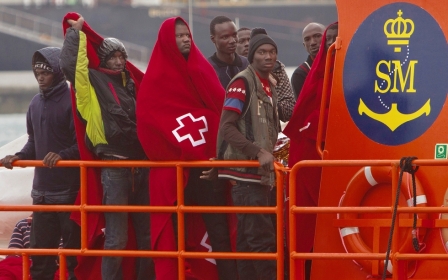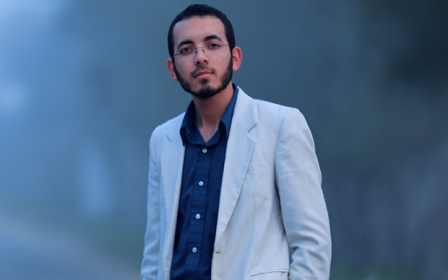Rovolon: A microcosm of the immigration debate in Italy

Rovolon, Italy - A ripped, white sheet with “No refugees! We are masters of our own home!” written in red ink, held up by a crowd in front of the town church. That was the message that preceded the arrival of five refugee families last October - consisting of several pregnant women, mothers and their children - to the small town of Rovolon in Italy’s northeastern region of Veneto. The clutch of communities that include Rovolon, Bastia di Rovolon and Carbonara is home to less than 5,000 inhabitants.
Threats against local volunteers and the town’s elderly parish priest promptly followed. Ominous references to “rifles” and “bombs under the altar” were considered serious enough to call for a report to the country’s national General Investigations and Special Operations Division (DIGOS), the Italian law enforcement agency responsible for investigating sensitive cases involving terrorism, to be filed.
Some eight months later, the parish priest who bore the brunt of the ordeal, Don Angelo, prefers not to talk of the incidents that have been seen as a “little laboratory for Italy’s immigrant issue,” said Giovanna Cappelletto, a teacher who has actively lobbied to help the families and authored a circular appeal that garnered many signatures in support of them. “Don Angelo found himself facing animosity that he never expected and it has definitely taken its toll,” Cappelletto said as she watched the priest cross the square in front of Bastia’s main church.
“When the refugees arrived here, their clothes were still crusty with salt from the crossing on traffickers’ boats,” Cappelletto said. They arrived on a police bus from where they had landed in Sicily, near the city of Agrigento, and were then brought to the town’s parish school that had been converted into a dormitory and safe house.
Rovolon transformed years ago from a small town with a broad age demographic into more of a bedroom community, consisting of restaurants and bars frequented by folks driving up from larger towns and cities to enjoy a meal in the Colli Euganee or Euganean Hills. It lost the need for the parish school as the number of children dwindled. So a local charity, Per un Sorriso (For a Smile), and the diocese decided to refurbish the building that was once an elementary school and put it to good use.
However, Don Angelo - along with Don Claudio from the nearby Bastia parish - was stunned. The knee-jerk reaction from some of the townspeople was decisive and unexpected. Shortly after, other anti-immigrant groups from other parts of the region jumped on the gravy train of naysayers and protesters. The largest demonstration included almost 200 participants gathered in front of the local town hall that faces the church square and a small gathering of thuggish, shaven-headed extremists representing the group Forza Nuova (New Force) showed up shortly after.
The following Sunday, Don Claudio told his parishioners, many of whom were recognisably part of those hissing anti-immigrant venom, to practice what is preached. “I am not a policeman nor politician, so I cited the Gospel, as did Pope Francis when he visited refugees in Lampedusa during his first trip to Sicily in July 2013,” Don Claudio said.
What happened, and is still happening, in this Veneto bubble is hardly an anomaly. Nor is it confined. Italy has long struggled to deal with the influx of migrants being trafficked in over the narrow straight from northern Africa to its southern island of Sicily.
Until recently, an Italian-run search and rescue mission dubbed Mare Nostrum patrolled the Mediterranean Sea to deal with the migration crisis and the numerous - and difficult to estimate - deaths related to it due to extreme conditions. The mission also dealt with heinous migration-related crimes, such as the alleged murder of 12 Christians said to be from Ghana being thrown overboard by co-travellers. The incident is being investigated as a religiously motivated incident.
Mare Nostrum was replaced by a smaller search and rescue operation in October 2014, which critics say is unable to deal with the growing numbers of overloaded boats driven by traffickers. According to the International Organisation for Migration (IOM), last year 170,000 people made the treacherous crossing to Italy, and some 56 were known to have lost their lives.
Since the beginning of 2015, the IOM says that the number of deaths is already 30 times higher, at 1,750, than during the same period of the previous year. A disaster of epic dimensions struck when a boat carrying trafficked migrants crossing to land in Sicily capsized, killing at least 800 people, overnight on Saturday, 18 April. The 28 survivors say many were trapped in the lower hold as others tumbled into the waters, scrambling to reach a merchant ship.
What happens when they land
If the migrants manage to make it to Italian shores, their odyssey is hardly over.
After the Red Cross and other organisations on site assist them and their health is checked, migrants are funnelled into centres for immigrants that many human rights groups say are more like prisons than assistance structures. Italy has three kinds: Centres for Identification and Deportation (CIE), Centres for Asylum Seekers (CARA) and Acceptance Centres (CDA).
The Italian government has now asked the country’s regions to find a way to take in the immigrants who are allowed to apply for refugee status. Some 70,000 asylum requests were presented in Italy in 2014, up 140 percent on the previous year. One Veneto Mayor, Mirano’s Maria Rosa Pavanello, said firmly on Monday following a meeting of the regional authorities: “We have done as much as we can.”
An increasing racist rhetoric surrounding the issue has grown.
“Look at this … this is so sad,” said Don Claudio as he showed social media posts that followed the 18 April tragedy that have been circulating furiously. “700 victims … too good to be true!” and “If only all of Africa would sink,” wrote two tweeters. Another columnist from the national daily paper il Giornale wrote: “Stop immigrant invasion … block the boats before they get here.” The columnist goes on to say: “To keep our country safe and under control, we will stop new mosques or Islamic prayer rooms.”
United Nations High Commissioner for Refugees (UNHCR) Laurens Jolles said last week: “It wouldn’t have been possible in the past, the racist rhetoric, the rhetoric of intolerance. In the 60s, 70s and the 80s, we would never have accepted this.”
Yet Don Claudio has seen a silver lining. “For as much as this has divided, it has bonded,” he said. The groups who have stood up in this culturally Catholic country have been mixed, but united. “It has given us, the clergy, reason to reflect, as well. Not everyone who is part of the congregation has been accepting and many have stepped up to the plate who are not church-goers.”
Admittedly, Italy often expressed dismay, feeling abandoned by the European Union as it tries to cope with the surge in refugees. On 23 April, the UN “forcefully” called on “European leaders to put human life, rights and dignity first when they are called on to [come up with] a joint response to the humanitarian crisis in the Mediterranean”.
Whatever the case and whoever sounds in, the volume on Italy’s immigration debate just got decisively louder.
Stay informed with MEE's newsletters
Sign up to get the latest alerts, insights and analysis, starting with Turkey Unpacked
Middle East Eye delivers independent and unrivalled coverage and analysis of the Middle East, North Africa and beyond. To learn more about republishing this content and the associated fees, please fill out this form. More about MEE can be found here.




